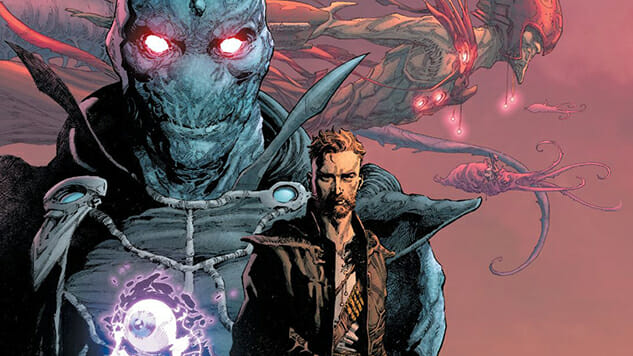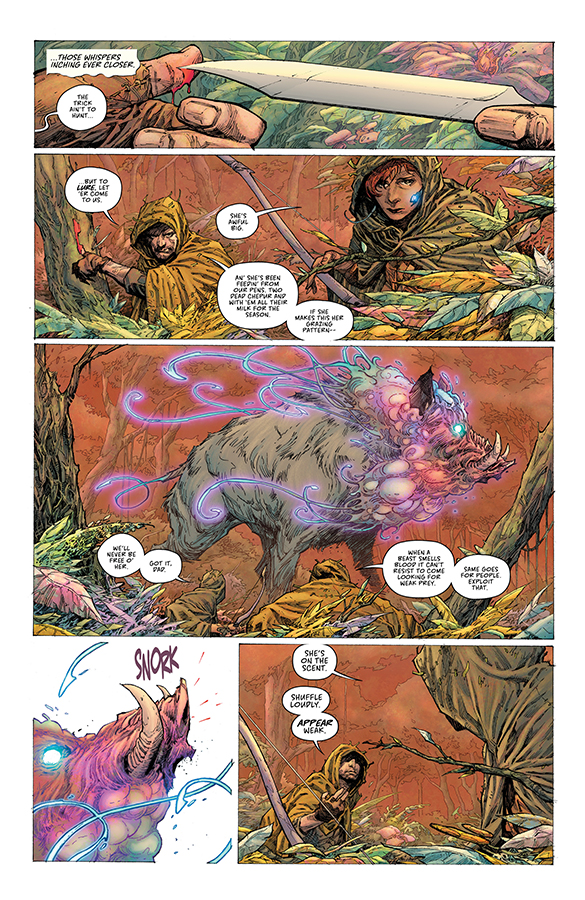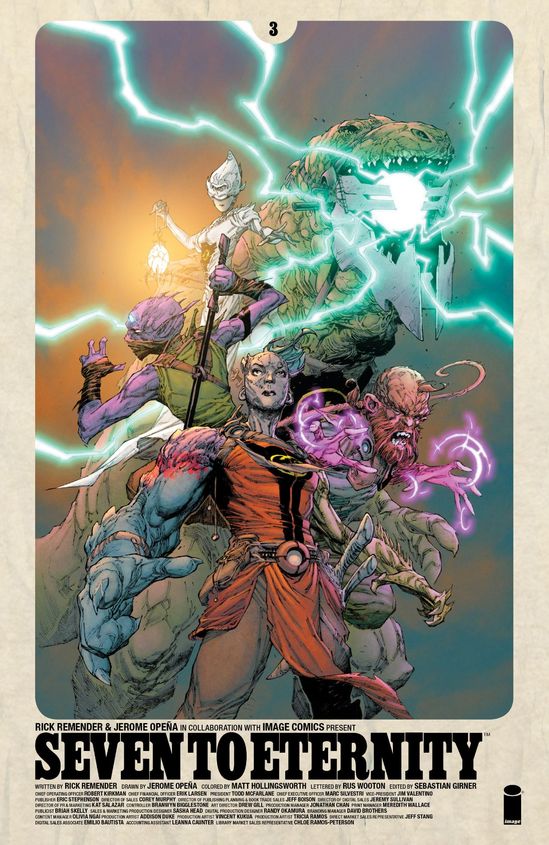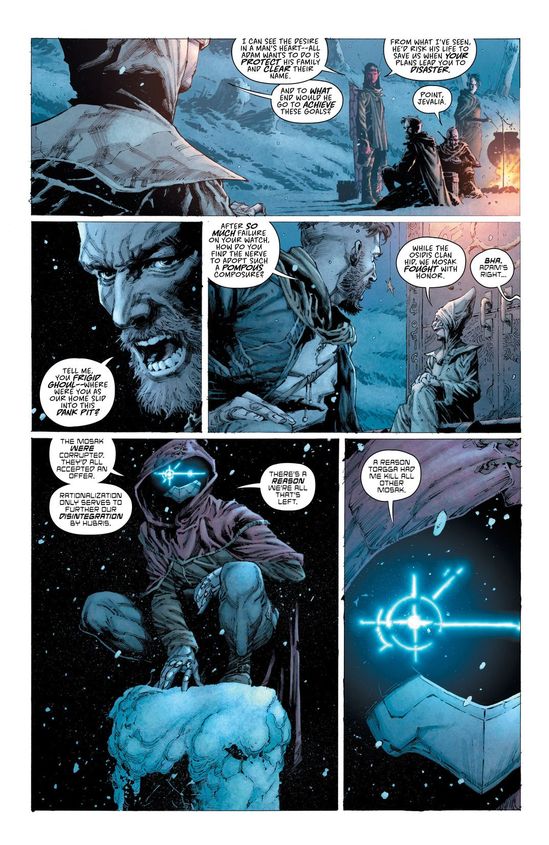Seven to Eternity is the Stunningly Gorgeous Fantasy About Our Awful Reality We Need Right Now
Main Art by Jerome Opeña & Matt Hollingsworth
Note: This piece is the comics Essential in Paste Quarterly #1, which you can purchase here, along with its accompanying vinyl Paste sampler.
Rick Remender is not a particularly subtle writer, but we’re not living in subtle times. When Patchwork, an insurgent knight, or “Mosak,” with the ability to stitch herself together from spare body parts, explains the rise of Seven to Eternity’s fascist demagogue, the allusion is unmistakable. “Regular men, who’d become suddenly wealthy, began holding public assemblies, selling themselves as the common voice,” she monologues. These men “[blamed] all misfortunes on minorities” and “convinced the native families that their woes came on the backs of spies hidden among the refugees.” As major real-world media outlets publish trend pieces on the sartorial choices of young white supremacists and an avowed anti-Semite holds the president’s ear, Patchwork laments that “prejudice and xenophobia became accepted as normal—
as true.”
Had Seven to Eternity debuted any time before June 2015, the God of Whispers—or the Mud King, to those less subservient—would clock as a glowing-eyed Hitler analogue. Instead, we’re left to ponder whether Remender is crafting a direct stand-in for Donald Trump or merely a manifestation of the cauldron of anger and fear that led to his troubling ascent. Either way, the series can’t be read without the pall of the previous year and the four (or, god help us, eight) years to come hanging over the high-fantasy narrative.
Seven to Eternity is the latest entry in Remender’s sprawling creator-owned empire at Image Comics, following the dimension-hopping Black Science, ’80s hardcore throwback Deadly Class, underwater post-apocalypse Low and neon dystopia of Tokyo Ghost. Jerome Opeña, the artist behind Remender’s Marvel Comics breakout Uncanny X-Force, as well as a contributor on earlier Remender works Fear Agent and Strange Girl, brings his intricate pencils and epic sense of scale to Seven to Eternity’s fantasy realm of Zhal, and it’s his unbridled sense of imagination that makes the book a must-read, even as the plot continues to firm up and Remender wrestles with some recurring narrative handicaps.

Seven to Eternity Interior Art by Jerome Opeña & Matt Hollingsworth
-

-

-

-

-

-

-

-

-

-

-

-

-

-

-

-

-

-

-

-

-

-

-

-

-

-

-

-

-

-

-

-

-

-

-

-

-

-

-

-











































